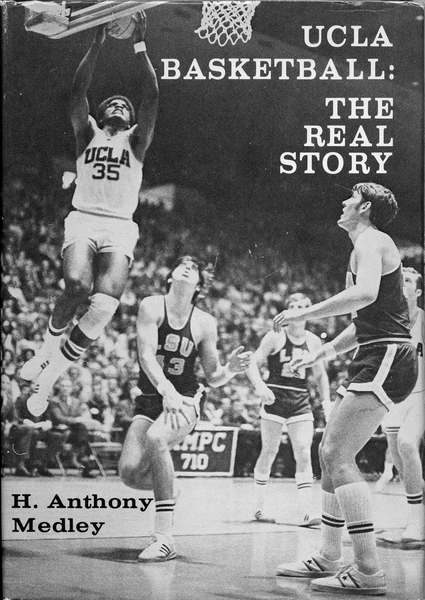|
Out of print for more than 30 years, now available for the first time as an eBook, this is the controversial story of John Wooden's first 25 years and first 8 NCAA Championships as UCLA Head Basketball Coach. This is the only book that gives a true picture of the character of John Wooden and the influence of his assistant, Jerry Norman, whose contributions Wooden ignored and tried to bury. Compiled with more than 40 hours of interviews with Coach Wooden, learn about the man behind the coach. The players tell their stories in their own words. Click the book to read the first chapter and for ordering information. Also available on Kindle. |
|
Lincoln’s Dilemma (3/10) by Tony Medley 4-part series TV-PG This movie is a continued effort to ignore the palpable fact that a predominantly white nation went to war to free black slaves. It starts out with a slap in the face by comparing the January 6 canard (when the only fatalities were the cold-blooded killings of two unarmed white female Trump supporters, one a veteran, by DC cops), to the Civil War. The POV of this film seems to be that Lincoln was a reluctant opponent of slavery and only prevailed because of the influence of Frederick Douglass (voiced by Leslie Odom Jr.), whom he only met twice, and black soldiers, to wit: Narrator (Jeffrey Wright): “As the Civil War raged into its fourth year, mounting casualties meant increased reluctance among whites to serve in the Union Army. The North’s enormous supply of manpower no longer looked inexhaustible. So whites gradually began to accept the necessity of African American soldiers.” And said David Reynolds, who is identified as the author of Abraham Lincoln in his Times, “In April of 1864 the confederacy was becoming more and more angry because African American troops from the north were really truly proving themselves to be vital to the northern military.” In fact, the Union Army was 90% white. Approximately 2,128,000 men served in the Union Army and 1,940,000 were white. At least 600,000 Union soldiers were killed, wounded, or went missing in the war (probably many more) and 90% of them were white but that fact is always ignored. Worse, the research is sloppy. Just as an example, it shows several photographs of the day of the Gettysburg Address, but there is only one photo extant that includes Lincoln. The film shows that photo but fails to identify the hatless man who is Lincoln (the far better Abraham Lincoln on the History channel shows the picture and identifies Lincoln). Since I have seen the picture, I knew who he was out of the hundreds in the picture but if you aren’t familiar with it, you are clueless. Speaking of the Gettysburg Address, Bill Camp, who voices Lincoln, gives an unenthusiastic, bland rendering of the speech and, given the counterfactual POV of this film, I can’t believe that it was not done intentionally. There are more absurd statements, like from James Oakes, identified as a “historian” at CUNY, “It (the South) was quite possibly the largest, wealthiest slave society in the history of the world.” Larger and richer than Rome? Slavery was a part of life in ancient Egypt. Greece, too; even Aristotle accepted it as “natural and necessary.” Here is a list of some of the people interviewed (have you ever heard of any of them?): Bryan Stevenson Founder Equal Justice Initiative Christopher Bonner historian U Maryland Sean Wilentz, Historian, Princeton Ted Widmer, historian CUNY Chandra Manning, Historian, Georgetown David Reynolds, Author Abe: Abraham Lincoln in his times Kate Masur, Northwestern James Oakes CUNY Jelani cobb journalist. Well, you get the picture. If you watch this series you wouldn’t have any idea that white people had much to do with freeing the slaves and that Lincoln was ambivalent, which is nonsense.
|
|
|
